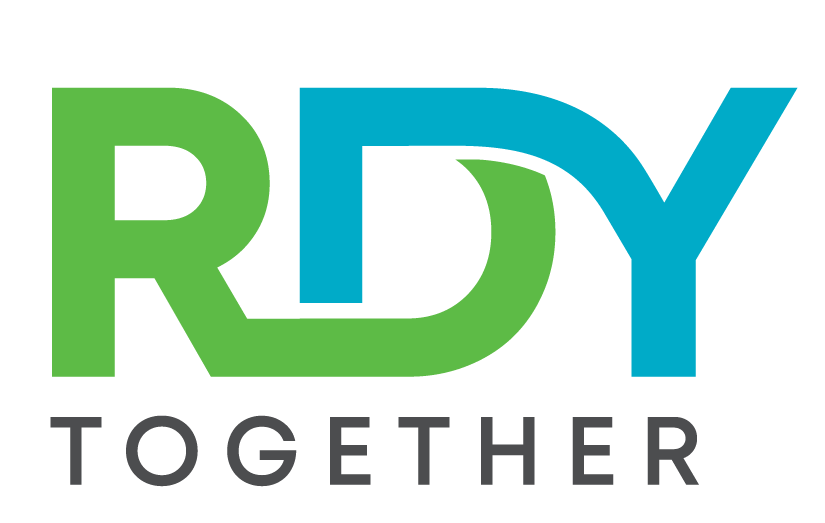
Case Studies
The following case studies highlight a range of work RDY Together is proud to have been a part of.
Please feel free to contact us with any questions you may have about them.
CASE STUDY #1
CLIENT PROFILE: Multi-state gas and electric utility company serving over 4 million customers
PHASE I:
Challenge: Inconsistent approach to emergency preparedness and response. Multiple companies and business units/segments each with their own emergency response procedures.
Solutions:
Developed an enterprise-wide All-Hazards Emergency Operations Plan (EOP) that provides a consistent approach to emergency response throughout the company and aligns with industry best practices. The EOP standardizes the response process and emergency organization structure for all incidents regardless of incident type, size, or complexity.
Designed easy-to-use visual management tools, quick reference guides, and streamlined modern resources that can be leveraged for front-line and executive audiences alike
PHASE II:
Challenge: Implementing the All-Hazards EOP methodology into existing emergency response plans within the organization
Solution:
Designed a 5-part workshop series to educate and collaborate with stakeholders within key business units to either update their existing emergency response plan to align with the All-Hazards EOP or develop an emergency response plan, if one does not exist. We facilitated the workshop series and updated the emergency response plan for a key business unit with critical emergency response responsibilities enterprise-wide.
We utilized a train-the-trainer approach wherein we provided the client workshop materials (presentations and facilitation guides). We also conducted the workshop series and completed emergency response plan updates for one business unit. This approach provided the client with the tools and experience to facilitate the process internally with other business units moving forward.
We also created plan development guidelines that outline best practices and recommendations for developing an emergency response plan
CASE STUDY #2
Challenge: A utility industry-specific emergency management benchmark study had never been conducted.
Solutions: Helped lead an utility-specific Emergency Management Benchmark Study to assess the maturity of emergency management capabilities across 17 large and midsize utility companies in the United States and Canada.
The objectives of the benchmarking study were to:
Recognize leading practices in emergency management, response, and communications
Acknowledge successful leadership in the field
Enhance industry knowledge sharing
As part of the benchmark study, site visits, interviews, and assessments were completed at all participating utility companies
CASE STUDY #3
CLIENT PROFILE: An electric utility serving nearly one million customers in the Southern US
Challenge: The client had previously adopted an All-Hazards model, which enables the company to use common capabilities to prepare for and respond to any hazard. Using this model, leadership within the Electric and IT organizations wanted to test the company’s ability to respond to three scenarios that had impacts within both IT and Operations (as well as several additional business units).
Solutions: Worked with client to design, conduct, and evaluate a series of tabletop exercises that tested the company’s ability to respond to a loss of critical facility, loss of personally identifiable information (PII), and SCADA attack scenarios. This included the development of a comprehensive after-action report (AAR) following the exercise series
CASE STUDY #4
CLIENT PROFILE: A midsize renewable energy company that provides a cloud-based solution to support utility clients and commercial and industrial asset owners in the commissioning, monitoring, optimization, and control of their clean energy portfolio or fleet.
Challenge: A key, large customer required the client to complete a Business Impact Analysis (BIA) and develop a Business Continuity Plan (BCP) as part of contracting requirements.
Solutions:
Conducted a BIA to identify, quantify, and qualify the impacts of a business disruption or emergency which creates an interruption of the client’s normal business activities. Summarized findings in a BIA report, a redacted version of which could be shared with customers to demonstrate compliance with contractual requirements.
Established and documented the client’s continuity processes and procedures to ensure business processes continue during a business disruption or emergency into a written plan. This included developing activation and notification protocols, establishing incident classification levels, and formalizing a response organizational structure within a formal, documented Business Continuity Plan (BCP)
This project kicked off in January 2020. Whereas initially the client was performing the work strictly to meet a contract requirement, the project became highly visible and critical as Covid-19 began impacting business operations during the course of the project. The CEO of the company was highly engaged in the project.
CASE STUDY #5
CLIENT PROFILE: A large, top-tier research university in the Mountain West with nearly 17,000 students, 250+ undergraduate programs, and 115+ graduate programs
Challenge: The client sought SME guidance and support to evaluate and improve the university’s Emergency Preparedness Plan, as well as provide training and exercises to test the Plan.
Solutions:
Conducted a review of the University’s current emergency management program structure, responsibilities, authorities, and activities (i.e., coordination strategies) and compared them to those employed by other higher education institutions of similar size and complexity (i.e. “peer institutions”), as well as to national best practices in higher education emergency management and current emergency management laws and authorities
Performed a review of the University’s existing Emergency Preparedness Plan by conducting a gap analysis against leading standard
Standard included, but not limited to FEMA’s Comprehensive Preparedness Guide (CPG 101), National Fire Protection Association (NFPA 1600), and REMS Guide for Developing Emergency Operations Plans for Institutions of Higher Education
Developed a Multi-Year Training and Exercise Plan that included training to cover various hazard types, different personnel types (e.g., senior leadership, emergency operations personnel), exercise types and timelines that builds upon trainings, and goals and milestones for the training and exercise program
Developed and conduced training sessions to key University personnel
Developed and conducted tabletop exercise to test Emergency Preparedness Plan utilizing HSEEP methodology with an exercise planning team that consisted of key stakeholders across the University.
Find out more about how RDY Together can help you and your business be more prepared and resilient.
Contact us today to schedule a discovery call.






